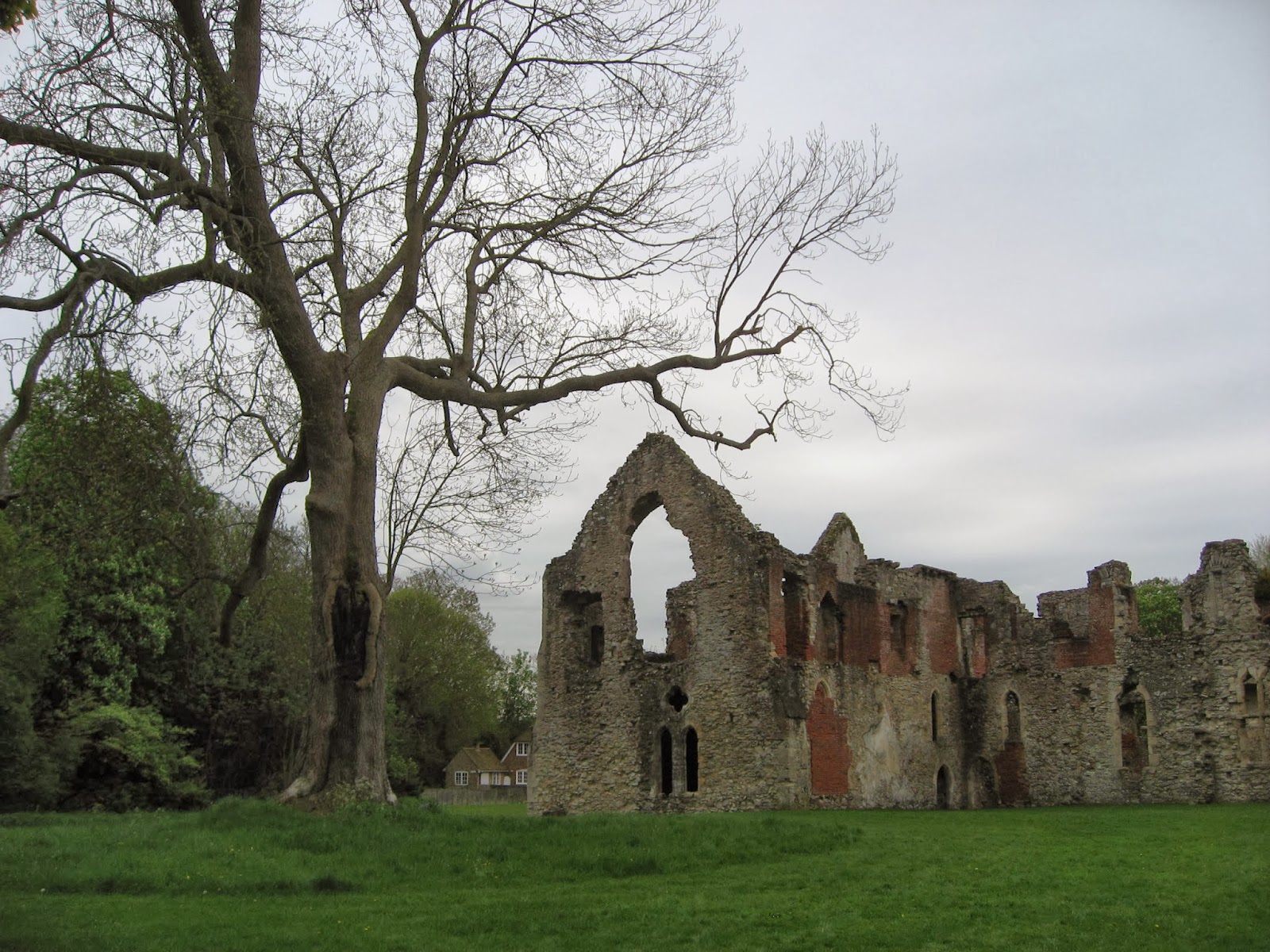 Netley Abbey, near Southampton, was home to the Cistercian
Order. It was founded by the Bishop of
Winchester in 1238, but fell victim to Henry VIII’s dissolution of the
monasteries 300 years later.
Netley Abbey, near Southampton, was home to the Cistercian
Order. It was founded by the Bishop of
Winchester in 1238, but fell victim to Henry VIII’s dissolution of the
monasteries 300 years later.
The abbey became home to Sir William Paulet, and it was used as a family home until the early eighteenth century, when it was abandoned.
In a letter to her sister Cassandra, Jane Austen mentions a boat ride
along the nearby river Itchen with her two nephews in October 1808.
Images of Netley Abbey © Sue Wilkes

Good pictures of Netley Abbey Sue. Close by but not within the English Heritage site are the fish ponds belonging to the Abbey. They now come within the gardens of private property. One of my old school friends has one of the Abbey's ponds within his garden.
ReplyDeleteThe second picture shows the Abbey apprently repaired with brickwork.
In one of your pictures you can clearly see brickwork.You might think,how could anybody think of repairing a thriteenth century building with brick?
It is some of the remains of William Paulett's house built after the Reformation. You can blame the Tudors for that bit of insensitive building!!!
The Abbey was an offshoot of Beaulieu Abbey in the New Forest. Netley had no great thinkers or writers, created no great educational foundations. Its main purpose was farming and bringing more wealth to its more house at Beaulieu. There are some of the original parish churches in the area begun by the monks.
Of course Netley has its ghost stories. One of the reasons there is so much of the ruins remaining is the fact that a local builder, who used Neltey to obtain building material was crushed by masonry from the west window of the abbey church falling on him and killing him. Other builders became afraid to use it as a quarry. after that.
Sue, a couple of more points.
ReplyDeleteThe Netley Abbey we see today is not quite how Jane Austen would have seen it. John Constables painting of 1833 and Francis Townes painting of 1809 show it covered in shrubbery, ivy and with trees growing in the spaces between and inside buidlings. All that has been cleared away now.
The Abbey ruins has been used to enact open air Skakespearian productions. For many years scouts from all over Hampshire used to meet for an annual jamboree. Many years ago I watched a march past of scouts in front of the chief scout of the time. It looked all very militaristic to me.
The local Catholic Church at Netley are permitted to hold a mass once a year on the site of the high altar. I have attended a couple of services in the abbey.
netley is famous of course for the great military hospital that used to strecth for nearly a mile along the banks of the Southampton Water.. It was instigated by Florence Nightingale after the Crimea War. Queen Victoria often used to sale across from Osborne House to vist the wounded troops at Netley.
netley hospital became infamous for the military expeimenting on mental problems amongst the toops. Some pretty dire remedies they experimented with there. They even tried to cure homosexuality at Netley!!!! The mind boggles.
Just remembered Sue. In one of Conan Doyles Shelock Holmes stories there is a scene where somebody asks where Dr Watson is. The reply is that he is away attending a Netley course..
ReplyDeleteI wonder what he could have been learning about at Netley?
There are stories of Americans, who used the hospital as a casuality centre after D Day driving along the long corridors in jeeps.
Thanks very much for all the fascinating info, Tony! It is amazing how much history can be associated with one place...
ReplyDelete